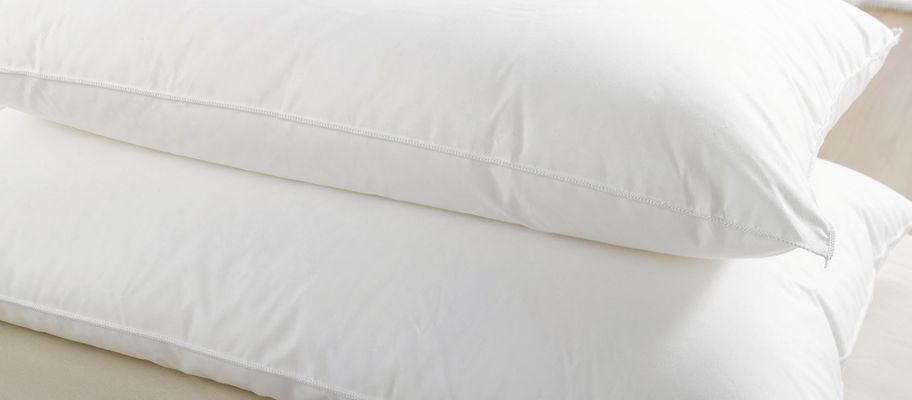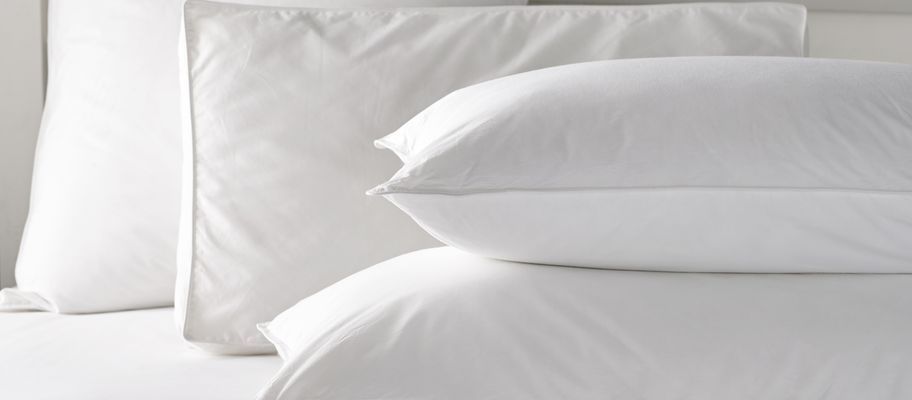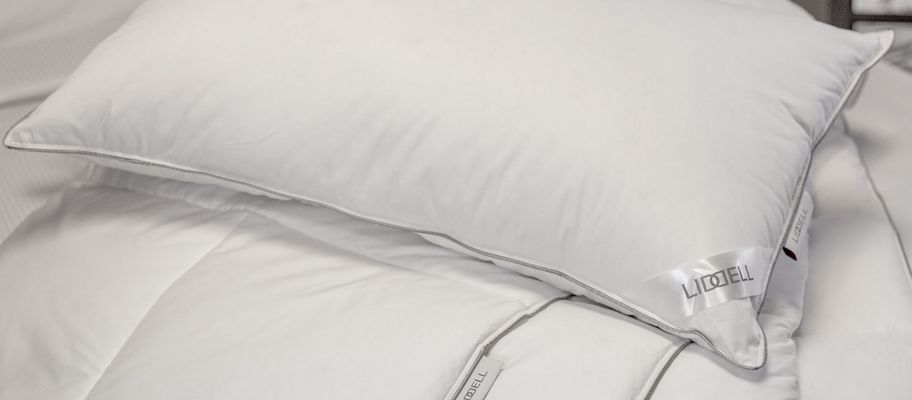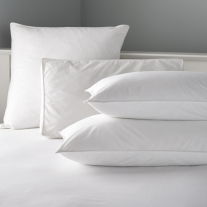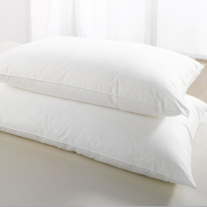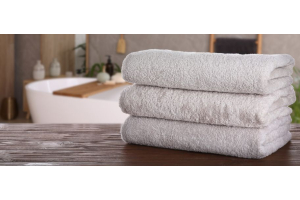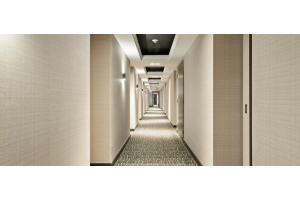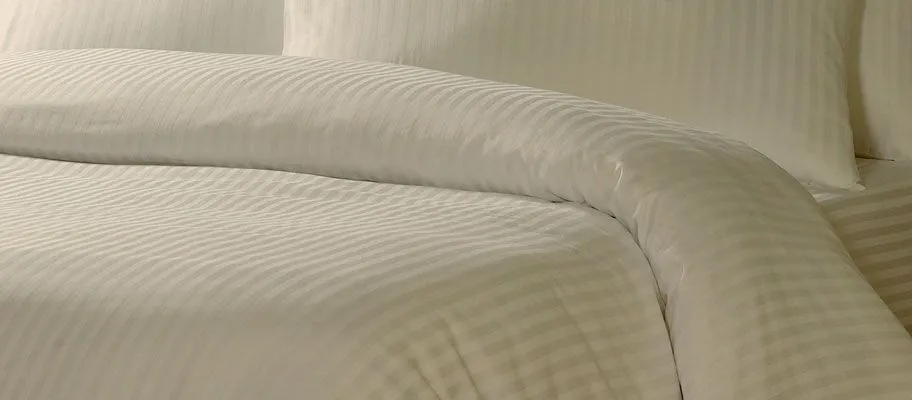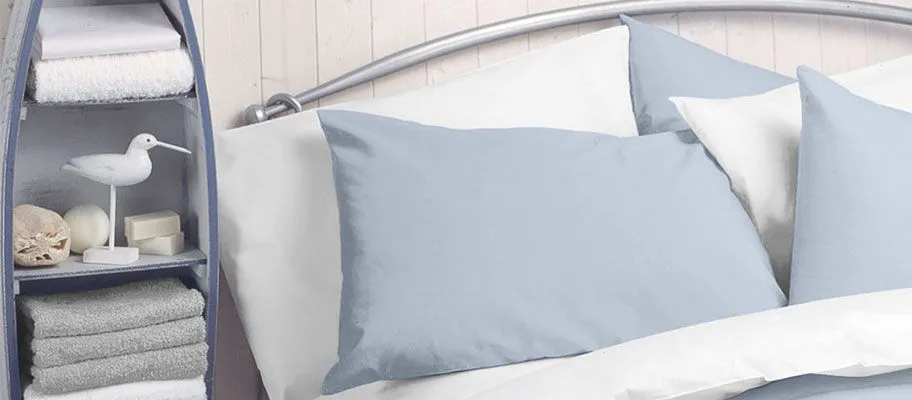We use cookies to give you the best possible experience. To accept cookies continue browsing, or view our Cookies Policy to find out more.
The Comprehensive Hotel Pillows Buying Guide
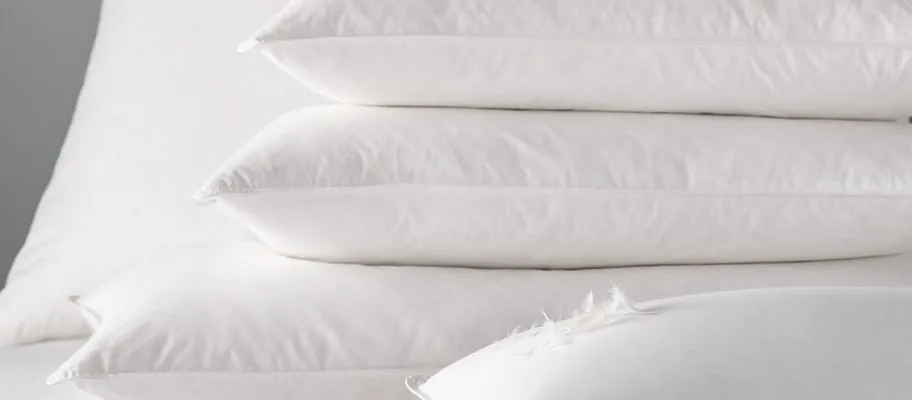
When it comes to pillows there’s no perfect choice for everyone. Just like with a lot of things in life, everyone has their own tastes and preferences. Just because you find a particular pillow the most comfortable thing you’ve ever slept on, it doesn’t mean that the next person will feel the same way. So, when it comes to hotel pillows, it’s always a good idea to have a few different types in your stockroom to give guests a choice of what they prefer.
In this article, we’ll break down the types of pillows available and how different styles of sleeping can affect what pillows people prefer. While we’re talking about hotel pillows, this buying guide applies to just about anyone. So, whether you’re looking to offer the best experience for your guests or just want a pillow that’s going to give you better sleep at home, read on to find out more!
How often should I replace pillows?
At home, the general advice is to replace pillows every one to two years. Keeping them for longer than this isn’t a good idea as your pillow absorbs sweat, salvia, dead skin cells, hair and more. This causes mould and allergens to accumulate, which isn’t good for people with allergies and isn’t something you want to be sleeping on full stop. Washing pillows can prolong life, but there will eventually be a point where replacing them is your only option.
For hotels, where hundreds of people will use the same pillow over time, pillows may be replaced more often. Big hotel chains go through thousands of pillows every year. However, with proper care and washing, there is no reason why hotel pillows can’t last as long as someone using it at home. Regular washing is a must to ensure nothing accumulates to attract allergens and dust mites, as well as ensuring they don’t suddenly start stinking to high heaven.
How do I know it’s time to replace my pillows?
Hotels will generally replace pillows over a set time period, but they can also be replaced when housekeepers start to notice signs of wear and tear. These include permanent stains caused by sweat and body oil, guests complaining that the pillow isn’t offering good support or report allergic reactions.
For feather pillows, a good trick is to fold the pillow in half. If it stays in that position then it’s time to replace it.
If your pillows are looking a little yellow, here's why that is and how you can prevent it.
What types of pillows are there?
Synthetic pillows
Synthetic pillows are pillows that are made from manmade materials. This includes hollowfibre, microfiber and polyester pillows. They’re the cheapest type of pillow you can buy, but that doesn’t mean the quality is bad. Depending on the material, synthetic pillows can closely emulate the feeling of natural pillows without the additional expense or other issues that can arise from having real feathers inside your pillows.
Hollowfibre pillows
A hollowfibre pillow is made from polyester and tends to have a lightweight springy feeling that creates a pillow with lots of bounce and support. It’s also a breathable pillow, due to the hollow spaces throughout the material. This option is great value for money as it’s an affordable material. Unlike feather pillows, you won’t have to fluff them up as much.
Hollowfibre pillows are also quite versatile as you can find types with anti-allergy properties and even flame retardant or waterproof versions.
Our most popular hollowfibre pillow (previously known as the Kerry) features an anti-allergy microfibre cover and a hollowfibre fill that gives a medium level of support. You can buy it here.
Microfibre pillows
Microfibre is a filling made up of fine polyester fibres that tend to be tightly woven together, making for a super comfortable alternative to natural fillings. They also tend to be antimicrobial and moisture repellent. Like hollowfibre, it’s an affordable material compared to natural pillows and they’re easy to keep clean and maintain, making them great value for money.
Our most popular pillow is a microfiber pillow. The 100% cotton microfibre pillow (previously known as the Arlington) provides a near-to-natural feel teamed with antimicrobial protection. It’s a fantastic budget option that doesn’t sacrifice on comfort.
Natural pillows
Natural pillows are pillows that contain natural products such as bird feathers. These tend to be more expensive than synthetic pillows and can often be found in luxury hotels.
Feather and down pillows
While more expensive than synthetic alternatives, feather and down is the most luxurious type of pillow we offer. Featuring duck feather or goose feather, these pillows are made up of a certain percentage of feather combined with down. For example, the filling of our goose down pillow is made up of 90% goose down and 10% goose feather, while being surrounded by a 100% cotton cover.
Feather and down pillows are a more comfortable option than pure feather pillows as they don’t have hard quills that poke through the cover and irritate you. They also retain heat and are soft and moldable, making a comfortable pillow that you can snuggle down into. The downside is that they need regular fluffing to ensure they retain their shape. As they’re a natural product, they can also smell a bit when first taken out of the packaging. Also, if you suffer from allergies to waterfowl, you should avoid these natural pillows.
How firm should a pillow be and does the type of pillow I need depend on my sleeping position?

While people will certainly have a preference when it comes to the firmness of their pillow, it’s crucial to pick the right type in order to ensure you’re getting the right amount of comfort and support to avoid getting neck pain.
The best pillows for front sleepers
Front sleepers need very little height because your spine remains relatively straight. Due to this, a soft, thin pillow is the best option. However, it’s best to avoid sleeping on your front at all if you can help it. Front sleepers put more pressure on their muscles and joints, which can lead to problems in the long-term. If you must sleep on your front, you can minimise spinal strain keeping your back in as natural of a position as possible. You can even prop up your pelvis with another thin pillow to improve spinal alignment.
The best pillows for back sleepers
If you prefer to sleep on your back then a medium to firm pillow is your best bet. This helps elevate and support your neck to keep it in a neutral position. Avoid pillows that are too soft or pillows that will tilt your head forwards as this can cause neck strain.
The best pillows for side sleepers
If you’re sleeping on your side then you’ll want to sleep in a way that keeps your spine and neck aligned as to avoid stiffness. To help with this, a firm and thick pillow is the best choice. This is especially the case if you have broad shoulders as it fills the gap between your ear and the mattress to avoid the need to bend your neck.
Side sleepers may also benefit from placing a thinner pillow between the knees to help align the pelvis.
To improve sleeping posture to improve or avoid back pain, read this short guide.
What about pillows for people with allergies?
There are two types of pillows for allergy sufferers that you need to know the difference between. ‘Hypoallergenic’ pillows mean that it’s less likely to trigger allergies amongst suffers, while ‘anti-allergy’ means that the pillow has been treated with something to protect against allergens such as dust mites.
On our anti-allergy pillows, we offer a ‘More Than Clean’ Micro-Fresh protection. This innovative antimicrobial technology is added to the pillows at the point of manufacture. It has also been widely tested and proven to be kind to skin.
To view our pillows with anti-allergy protection, click here.
Take a look at our full range of hotel quality pillows.
Now that you know all about pillows, why not read about the different types of pillowcases that go with them?


